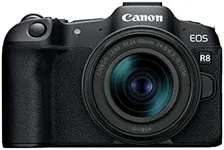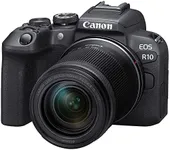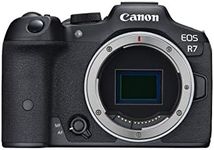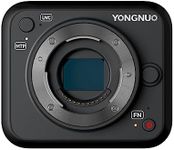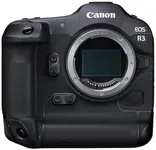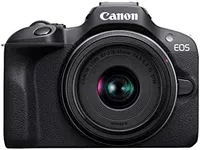Buying Guide for the Best Canon Mirrorless Cameras
When choosing a Canon mirrorless camera, it's important to consider your specific needs and how you plan to use the camera. Mirrorless cameras are known for their compact size, versatility, and advanced features, making them a great choice for both amateur and professional photographers. To make an informed decision, you should understand the key specifications and how they impact your photography experience.Sensor SizeThe sensor size determines the quality of the images and the camera's performance in low light conditions. Larger sensors, such as full-frame sensors, capture more light and detail, making them ideal for professional photography and low-light situations. APS-C sensors are smaller but still offer excellent image quality and are more compact and affordable. If you are a professional or serious enthusiast, a full-frame sensor might be the best choice. For casual photography or travel, an APS-C sensor can be a great option.
MegapixelsMegapixels refer to the resolution of the camera's sensor, indicating how many millions of pixels the sensor can capture. Higher megapixels mean more detail in your images, which is important for large prints or cropping photos without losing quality. Cameras with 20-30 megapixels are generally sufficient for most users, providing a good balance between image quality and file size. If you need extremely high resolution for professional work, consider cameras with 40 megapixels or more.
Autofocus SystemThe autofocus system determines how quickly and accurately the camera can focus on subjects. Advanced autofocus systems with more focus points and faster performance are crucial for capturing fast-moving subjects, such as in sports or wildlife photography. For general photography, a camera with a reliable and moderately fast autofocus system will suffice. If you frequently shoot action or need precise focus, look for cameras with advanced autofocus features like eye detection and tracking.
Image StabilizationImage stabilization helps reduce camera shake, resulting in sharper images, especially in low light or when using longer lenses. In-body image stabilization (IBIS) is a feature where the camera body itself compensates for movement, which is beneficial for handheld shooting. If you often shoot in challenging conditions or without a tripod, a camera with IBIS can be very helpful. For studio or controlled environments, this feature might be less critical.
Video CapabilitiesIf you plan to shoot videos, consider the camera's video capabilities, such as resolution, frame rates, and additional features like slow motion or time-lapse. Cameras that can shoot 4K video provide high-quality footage and are becoming standard. For casual video recording, 1080p resolution is usually sufficient. If you are a videographer or content creator, look for cameras with advanced video features, such as high frame rates, external microphone input, and good autofocus performance during video recording.
Battery LifeBattery life is important, especially if you plan to shoot for extended periods or in remote locations where charging options are limited. Mirrorless cameras typically have shorter battery life compared to DSLRs due to their electronic viewfinders and compact size. Look for cameras with a battery life that matches your shooting habits. For long sessions or travel, consider carrying extra batteries or a portable charger.
ConnectivityConnectivity features like Wi-Fi, Bluetooth, and NFC allow you to easily transfer photos to your devices, control the camera remotely, and share images on social media. These features can be very convenient for on-the-go photographers who want to quickly share their work. If you value instant sharing and remote control, look for cameras with robust connectivity options. For more traditional workflows, these features might be less critical.


